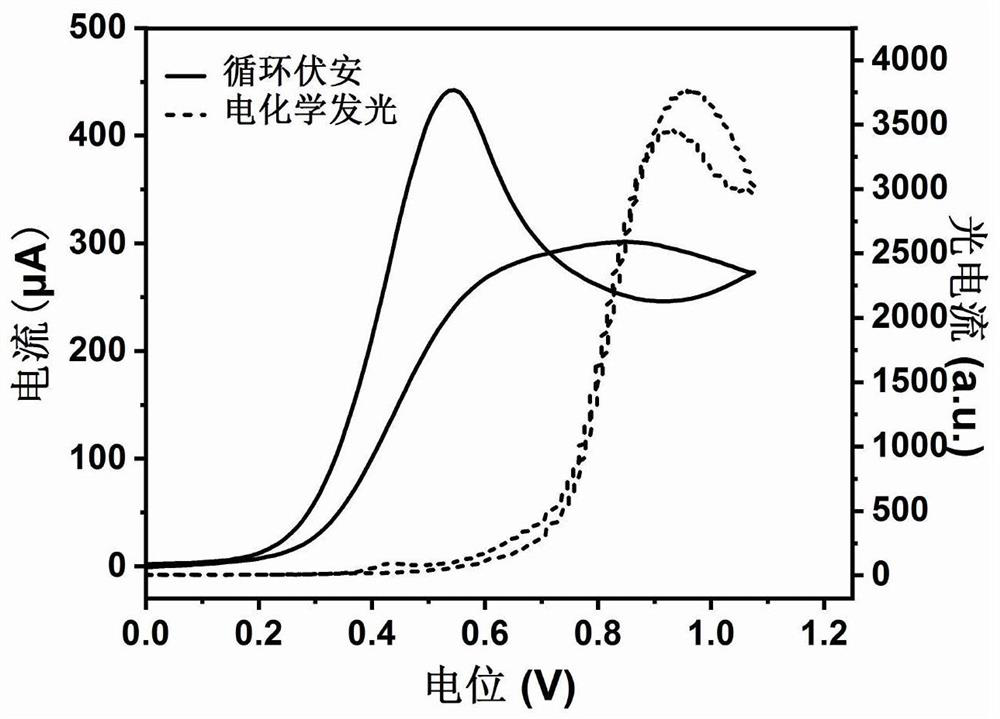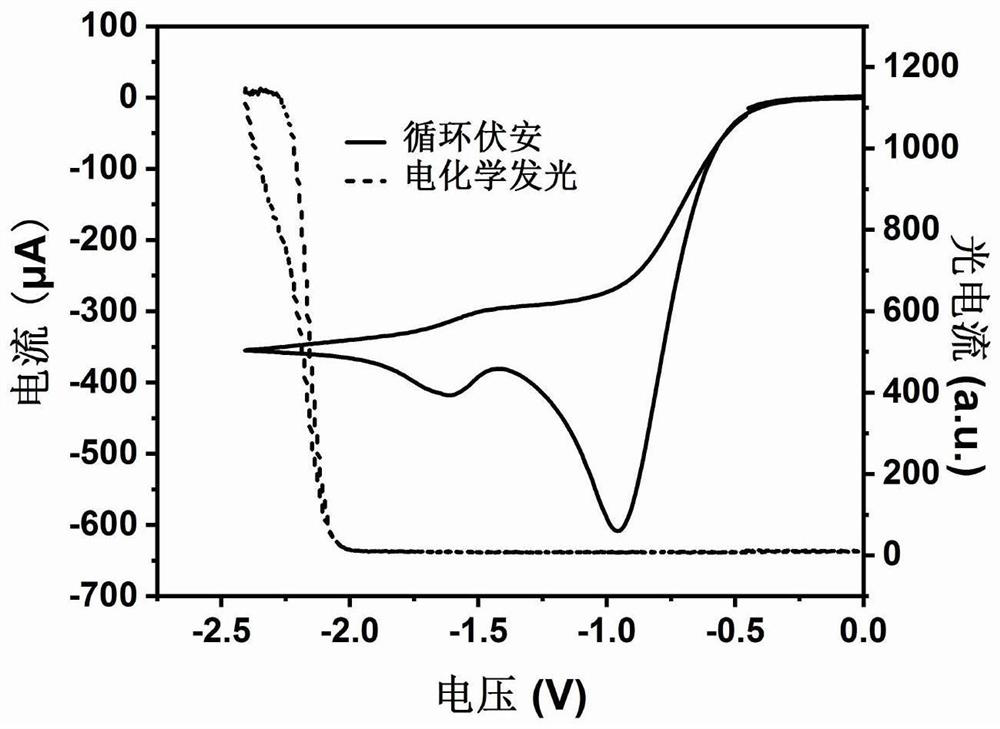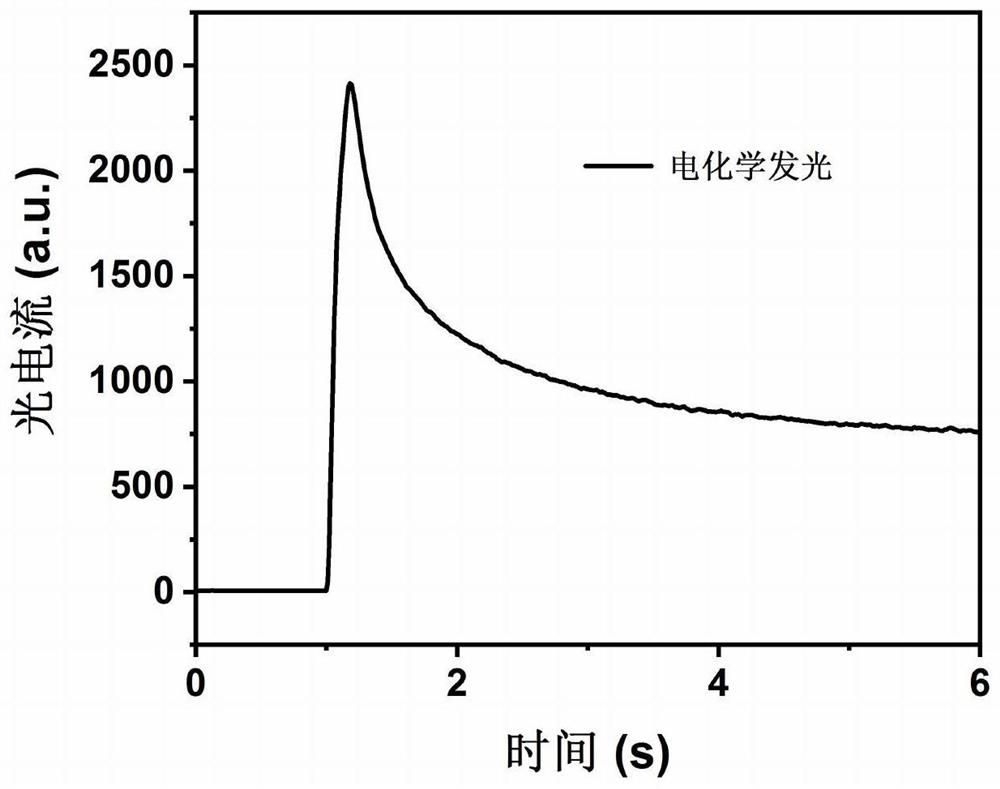Electrochemical luminescence compound, electrochemical luminescence system and application thereof
A luminescent compound and electrochemical technology, which is applied in the direction of chemiluminescence/bioluminescence, indium organic compounds, and electrochemical variables of materials, can solve the problem of single luminescent color, and achieve high application safety, strong stability, and good monochromatic sexual effect
- Summary
- Abstract
- Description
- Claims
- Application Information
AI Technical Summary
Problems solved by technology
Method used
Image
Examples
Embodiment 1
[0034] The structures of the electrochemiluminescent compounds used are shown below:
[0035]
[0036] Synthesis of Electrochemiluminescent Compounds:
[0037] First, imidazole is reacted with 4-bromodibenzothiophene to obtain a ligand precursor, and then the ligand precursor is reacted with methyl iodide to obtain a C^C bidentate ligand, and then the C^C* bidentate ligand is further obtained The intermediate reacts with the chlorobis(cyclooctene) iridium (I) dimer to obtain an intermediate, and finally reacts the intermediate with N^N, N^O or O^O bidentate ligands to obtain the final electrochemiluminescence compound.
[0038] The glassy carbon electrodes in the electrochemiluminescent system involved in the present invention all use Al 2 o 3 Grinding with polishing powder, cleaning with ultrapure water, using N 2 Blow dry the surface.
[0039] (1) In the acetonitrile solution system, the concentration of the electrochemiluminescent compound is 0.1mmol / L, tetrabutylam...
Embodiment 2
[0043] The structures of the electrochemiluminescent compounds used are shown below:
[0044]
[0045] (1) In the acetonitrile solution system, the concentration of the electrochemiluminescent compound is 0.1mmol / L, tetrabutylammonium hexafluorophosphate is used as the supporting electrolyte, the concentration is 0.1mol / L, and tripropylamine is used as the co-reaction molecule, the concentration is 40mmol / L, using cyclic potential scanning method (the potential range is 0V~+1.10V, the scanning speed is 50mV / S, and the potential is expressed as Fc + / Fc as a reference), and the electrochemiluminescence signal was collected using a photomultiplier tube (550 times). The wavelength of the electrochemiluminescence peak is 560 nm.
[0046] (2) In the acetonitrile solution system, the concentration of the electrochemiluminescent compound is 0.1mmol / L, tetrabutyl ammonium hexafluorophosphate is used as the supporting electrolyte, the concentration is 0.1mol / L, and tripropylamine i...
Embodiment 3
[0048] The structures of the electrochemiluminescent compounds used are shown below:
[0049]
[0050] (1) In the acetonitrile solution system, the concentration of the electrochemiluminescent compound is 0.1mmol / L, tetrabutylammonium hexafluorophosphate is used as the supporting electrolyte, the concentration is 0.1mol / L, and tripropylamine is used as the co-reaction molecule, the concentration is 40mmol / L, using cyclic potential scanning method (the potential range is 0V~+1.03V, the scanning speed is 50mV / S, and the potential is expressed as Fc + / Fc as a reference), and the electrochemiluminescence signal was collected using a photomultiplier tube (550 times). The wavelength of the electrochemiluminescent peak is 538nm.
[0051] (2) In the acetonitrile solution system, the concentration of the electrochemiluminescent compound is 0.1mmol / L, tetrabutyl ammonium hexafluorophosphate is used as the supporting electrolyte, the concentration is 0.1mol / L, and tripropylamine is ...
PUM
| Property | Measurement | Unit |
|---|---|---|
| Wavelength | aaaaa | aaaaa |
| Wavelength | aaaaa | aaaaa |
| Wavelength | aaaaa | aaaaa |
Abstract
Description
Claims
Application Information
 Login to View More
Login to View More - R&D Engineer
- R&D Manager
- IP Professional
- Industry Leading Data Capabilities
- Powerful AI technology
- Patent DNA Extraction
Browse by: Latest US Patents, China's latest patents, Technical Efficacy Thesaurus, Application Domain, Technology Topic, Popular Technical Reports.
© 2024 PatSnap. All rights reserved.Legal|Privacy policy|Modern Slavery Act Transparency Statement|Sitemap|About US| Contact US: help@patsnap.com










